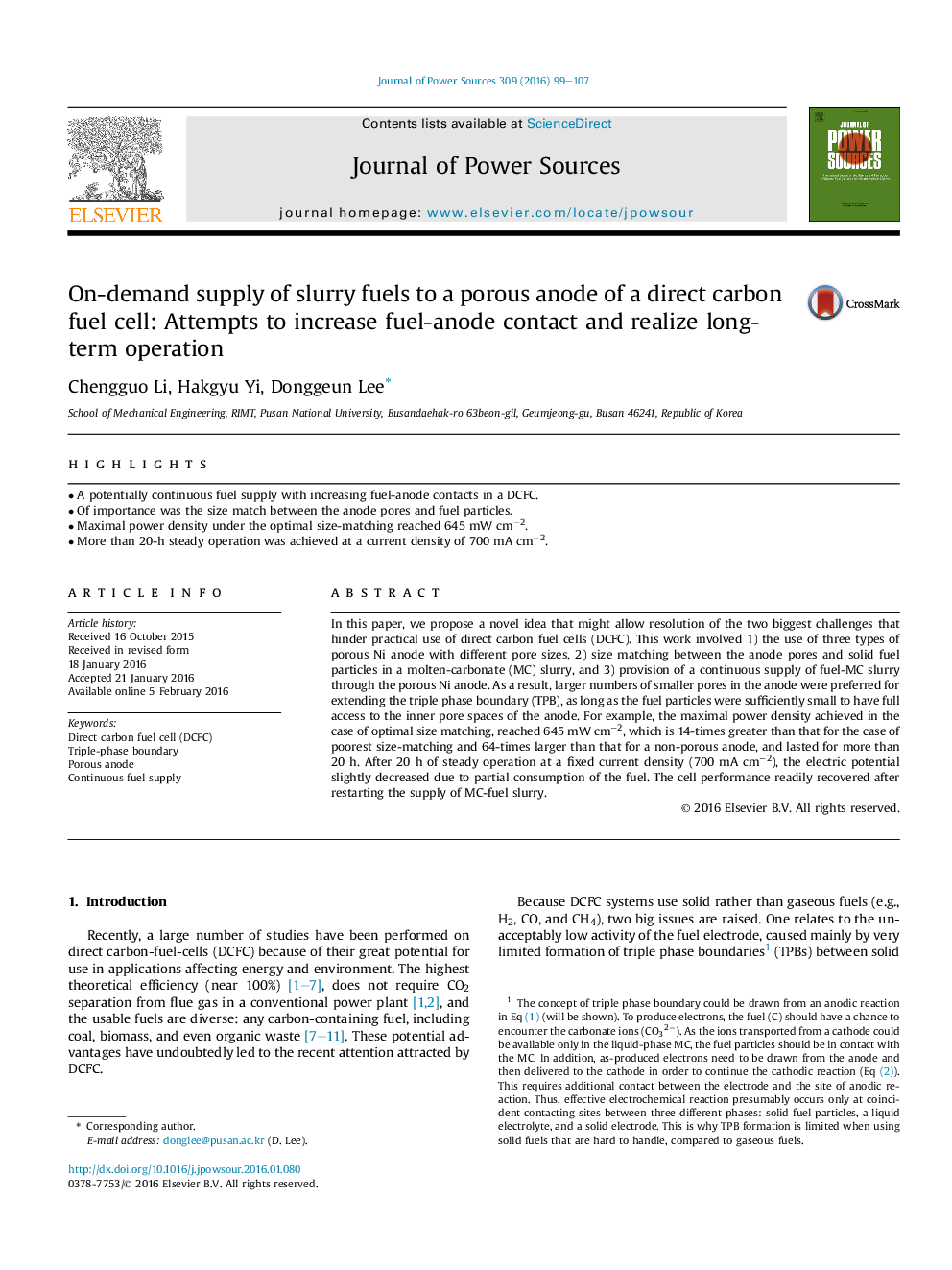| Article ID | Journal | Published Year | Pages | File Type |
|---|---|---|---|---|
| 7728644 | Journal of Power Sources | 2016 | 9 Pages |
Abstract
In this paper, we propose a novel idea that might allow resolution of the two biggest challenges that hinder practical use of direct carbon fuel cells (DCFC). This work involved 1) the use of three types of porous Ni anode with different pore sizes, 2) size matching between the anode pores and solid fuel particles in a molten-carbonate (MC) slurry, and 3) provision of a continuous supply of fuel-MC slurry through the porous Ni anode. As a result, larger numbers of smaller pores in the anode were preferred for extending the triple phase boundary (TPB), as long as the fuel particles were sufficiently small to have full access to the inner pore spaces of the anode. For example, the maximal power density achieved in the case of optimal size matching, reached 645Â mWÂ cmâ2, which is 14-times greater than that for the case of poorest size-matching and 64-times larger than that for a non-porous anode, and lasted for more than 20Â h. After 20Â h of steady operation at a fixed current density (700Â mAÂ cmâ2), the electric potential slightly decreased due to partial consumption of the fuel. The cell performance readily recovered after restarting the supply of MC-fuel slurry.
Related Topics
Physical Sciences and Engineering
Chemistry
Electrochemistry
Authors
Chengguo Li, Hakgyu Yi, Donggeun Lee,
